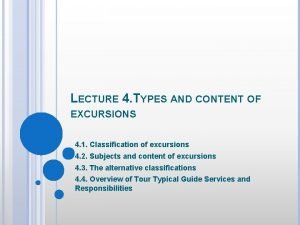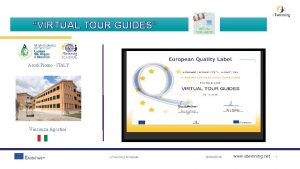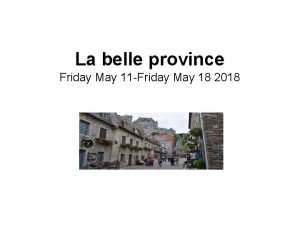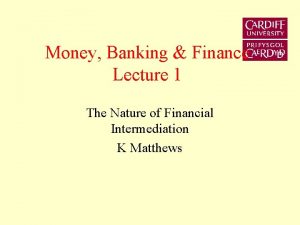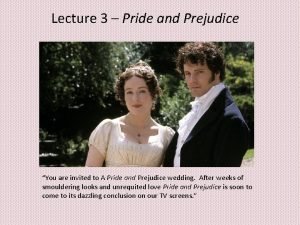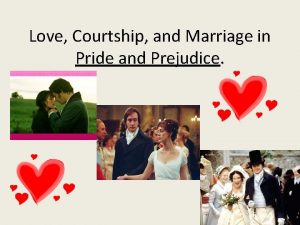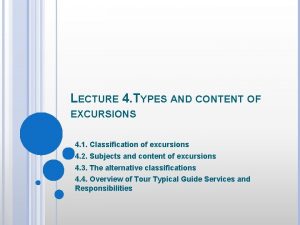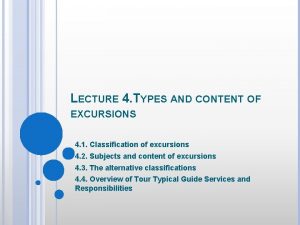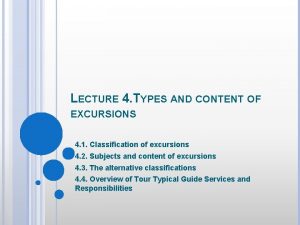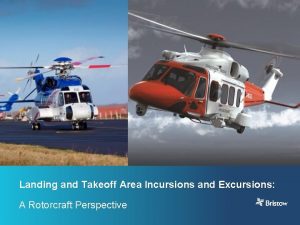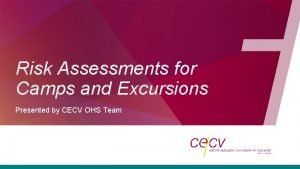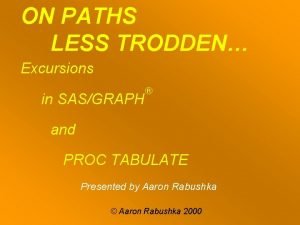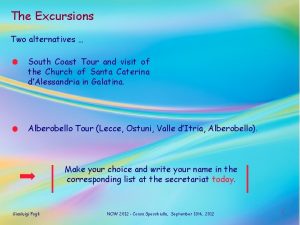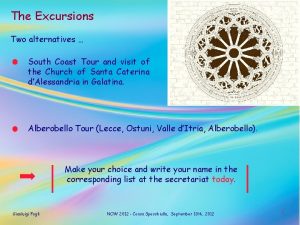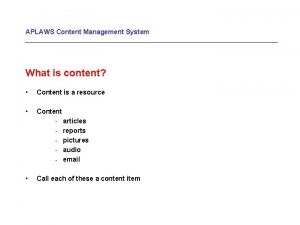LECTURE 4 TYPES AND CONTENT OF EXCURSIONS 4

























- Slides: 25

LECTURE 4. TYPES AND CONTENT OF EXCURSIONS 4. 1. Classification of excursions 4. 2. Subjects and content of excursions 4. 3. The alternative classifications 4. 4. Overview of Tour Typical Guide Services and Responsibilities

4. 1. CLASSIFICATION OF EXCURSIONS Classification represents the distribution of objects, phenomena, concepts into classes, categories, groups, depending on their general attributes. The question of excursions classification has always been in the center of the tour guiding professionals and scientists’ attention. The first attempts to solve this problem was made in the end of 20 th century. The scientist A. Gerd proposed his variant of classification of the forms of excursion work - the basic purpose is the divisions of excursions into groups and subgroups which have the general character of conducting excursions and which help the tour guide to solve all the issues of the excursion development.

Excursion service (tour guiding) is an independent activity (for example, at the resorts, in the universities, schools), and a part of a complex of tourist services (in travel agencies). At the moment the excursions are classified according to : 1) the content; 2) the type and quantity of the participants; 3) the location; 4) the means of travelling; 5) duration; 6) the form. Each group has components inherent in it, its specificity and features.

1) By content excursions can be subdivided into the ones that give an overview of the object / objects (multidisciplinary) and thematic. As a rule overview excursions are multi theme and they are called multidisciplinary. Historic and modern materials are used here. During the overview excursions events are described in general. This gives an idea about a town, area, region, republic, state as a whole. The chronological timeframe of this type of excursion ranges from the date when the town has been first mentioned until present day and its development perspectives. Thematic excursion is dedicated to one theme and if it is a historic excursion then one or several events are connected to one theme or sometimes it is a longer period of time that can form a basis for such an excursion. If theme of excursion is architectural then the objects of learning can be the most outstanding pieces of architecture located at streets and squares of the town and for bigger cities it can be architectural complexes of the past centuries. Thematic excursions can have a historical, industrial, naturalistic (ecological) purpose, as well as they can be focused on fine arts, literature and architecture and town- planning.

According to the content, historical excursions are subdivided into the following subgroups: Historical study of the local area – local history study (for example, "History of Kharkiv", "From the history of the Kiev Pechersk Lavra", etc. ); Archeological (for example, excursion to Khersones with the display of the material of the historical sourcesexcavation); Ethnographic, telling about customs and traditions of the different nations and nationalities; Military-historical, which are held in the places of fighting glory (for example, “Poltava Battle", etc. ); Historical-biographic (in the places of life and activity of famous people); Excursions to the historical museums.

Industrial excursions are divided into subgroups: Industrial-historical; Industrial-economic (for example, the activity of banks or stock exchanges, the market of the real estate, etc. ); Technological; Professionally-oriented for pupils. Art criticism excursions have subgroups: Historical-theatrical (for example, "From the history of Kharkiv Theatre", “The backstage of Kh. NATOB", etc. ); Historical-musical (for example, "Kharkiv musical", etc. ); On national art crafts (for example, “Motanka dolls”, “Painting Easter eggs”, etc. ); In the places of life and activity of art workers (for example, “K. Shulzhenko (L. Gurchenko) in Kharkiv", “Leonid Bykov as the symbol of Kharkiv”, etc. ); In picture galleries and showrooms, museums, in workshops of artists and sculptors.

Literary excursions are usually grouped as follows: The literary-biographic – are held in the places which keep the memory of life and creativity of the writer, poet, the playwright, etc. (for example, “The fables Kharkivskiya by Grygory Skovoroda”, “Kharkiv period of Grigory Kvitka. Osnovyanenko; etc. ); The historical-literary – concentrate on the certain periods of development of the country's national literature (for example, "Kharkiv Literary in 20 th years of XX century", "The role of the house “Слово” and its occupants in the literary heritage of Kharkiv”", etc. ); The literary and art – are poetic-text excursions (for example, "Kharkiv poetic") or excursions in places which have found its reflection in works of this or that writer (for example, “By the footsteps of O. Honchar heroes”, "Kharkiv in the works of Ukrainian writers", etc. ).

Classification of excursions into Architecture and Town-planning themes: Excursions with the demonstration of the architectural constructions of the given city; The excursions connected with the demonstration of architectural monuments of the certain historical period; The excursions which represent the work and creativity of one architect; The excursions acquainting with a lay-out and building of cities under general plans; The excursions with the demonstration of samples of modern architecture; Excursions to the new buildings. It is necessary to note, that thematic excursions of this or that kind seldom exist separately from each other. For example, the historical material is used in the excursions on architecture and town-planning themes; elements of naturalists' excursions find their place in excursions almost of each group of thematic excursions. All depends on the precise conditions of the excursion carrying out, from resources of the cognitive plan of this or that city or region.

2) By the type and quantity of the participants excursions can be individual, for locals, tourists, adults and school pupils, etc. Peculiarities of information perception is different with every mentioned group therefore changes should be introduced into content of activities, methodology, their technique as well as their duration. 3) The location for excursion can be town, suburban area, industrial area, museum or it can be a complex of a few locations (with elements of a few locations).

4) According to the means of travelling excursions can be: a walking tour and with the use of different means of transport. The preference of a walking tour is that it allows creating a necessary pace and they provide favourable conditions for showing around and telling a story. Excursions with the use of transport (mainly buses) consist of two parts: analysis of excursion objects (e. g. historic and cultural monuments) during the bus stops and a description of the monuments and memorable locations while on the road between the objects. For some excursions, the trolley buses, trams (excursion tram “Annushka” in Kharkiv), river and sea motor ships, helicopters, etc. are provided. 5) Duration of excursion ranges from 1 academic hour (45 minutes) to one day. Short tours (from 1 to 3 -4 days) are called weekend routes which can contain several excursions of different length.

6) Form of excursions can be different: o group excursion, when participants follow the route simultaneously on 10 -20 buses with a tour guide provided for every bus; o excursion-walk containing learning elements with resting on the way which is done in a forest, park, at the sea or river side; o excursion-lecture (description prevails over demonstration); o excursion-concert is dedicated to a musical theme with listening to music compositions while on a bus trip; o excursion-play – is a form of literary and art excursion prepared on the basis of certain fiction; o excursion-consultation which gives illustrative answers to participants' questions and is one of the ways of upgrading qualifications; o excursion-demonstration is the most illustrative form of familiarization of the group with the nature phenomenon and production processes; o excursion-lesson is a form of knowledge transfer in accordance with a learning programme of this or that educational institution; o excursion-advertising (fam tours).

Conclusion. A correct classification of excursions provides conditions for better organisation of a tour guide’s work with the clients, turnes learning into a specialised process and makes it easier, creates a basis for activity of methodological sections. The use of excursion rules, which are tailored for a certain group, helps to actually get the excursion prepared and effective.

4. 2. SUBJECTS AND CONTENT OF EXCURSIONS There are no identical excursions, they differ, first of all, according to themes and contents. The word "theme" in translation from Greek means “something that is put in a basis". The theme represents the concept which concerns something. This concept contains the instructions: to which circle of the phenomena is the given product devoted; what is the author’s concern (to attract attention of the readers, listeners, spectators, to aspire); what exactly, to what extent and from which positions the author wishes to represent the topic. Each excursion should have the precise theme. A theme of the excursion is a subject of the display and the narrative. Formation of a theme represents the brief and concentrated statement of the basics of excursion. Every excursion should have an aim in its theme. The theme of excursion reflects its connection with a certain field of science in a society or nature and is a basis for excursion classification. Excursions are an integral part of cultural and learning work and at the same time they are an important educational tool for children and teenagers which help the overall development of a personality, formation of an outlook, moral and aesthetic education. Idea is a plan of excursion, its main thought. The theme and idea make an ideologically-thematic basis of the product (excursion).

Preparation of a new theme of the excursion is the multi monthly intense work of a collective of workers. The peculiarities of each excursion theme is that it should be closely connected with the objects of display and with the excursion material which satiates the content of the excursion. This material should be submitted in such volume which can be understood and perceived by tourists at the display of the objects. The theme plays a main role in the integrating of externally isolated parts of excursion into a single whole. It is theme of excursion which defines how to show the object, what piece of information to give to the tourists in each case. Some objects are presented in several excursions. For example, three Kharkiv churches (Annunciation, Assumption and St. Basil) are shown in sightseeing tours. And in each of them the different volume of information about the same object is given, in stories it is covered in various foreshortenings (ракурс).

The great value has the consistency of the excursion theme. The narration and display should "work" on its basic theme. Along the route the tour group can “meet" the objects that are located on the given route, but do not belong or concern the chosen theme. Data on such objects can be very interesting but minor to theme particularly considered on this route. Therefore, the guide can provide the tourists with some information on these objects only in the form of answers to the questions. Each theme represents a set of subthemes. Every theme should be complete and logic. Correctly developed subtheme should be perceived by the tourists not in itself, but together with others themes, in a composition. Composition of excursion is an arrangement, sequence and a balance of themes, the basic questions, introductions and a final part of excursion. Leading theme is a composition center of excursion around which the story of excursion is developing. It promotes deeper disclosure of the excursion, makes it convincing and memorable. The name of excursion is a language expression, in the direct and indirect form designating the content. The name of excursion should express sense. It should be exact, without supposing double interpretation.

4. 3. THE ALTERNATIVE CLASSIFICATIONS (A) There are hundreds of different travel excursions (we would call them trips, not excursions) offered by thousands of different travel agencies, cruise lines, and other travel outfits. While every travel company has a different term for the excursions that are offered, most of these trips provide the same types of experiences. Essentially, there are four different types of excursions, including adventure, leisure, romance, and family. While there are varying degrees of adventure, an adventure excursion involves embarking upon a trip that will require both mind and body involvement. These trips can include anything from cycling through great mountains to swinging on vines (лиана) through a rain forest. Typically, a person must be in good physical health in order to partake in an adventure travel excursions; unless, of course, tourists will be transported through treacherous terrain while riding inside of a vehicle.

Leisure excursions are just like they sound. People wishing to spend their vacations relaxing poolside, sitting on a beach, or booking spa treatments will enjoy leisure vacations. Some travel companies add extra details to these vacations including meals, special accommodations, and unique relaxation experiences. People who need a true escape from everyday life will benefit from a leisure excursion. Honeymooners and romantic couples alike may want to sign up for a romantic excursion. These excursions include all the basic romantic necessities, champagne, solitude, romantic meals, and some travel companies even include spa treatments for two people in a romantic excursion package. Generally, newlywed couples can enjoy deep discounts on romantic excursions. Family excursions are ideal for the whole family. These trips usually involve activities that both younger and older family members can enjoy. Frequently, family trips include various options that each family member can select from. People seeking a family vacation may enjoy the different family-based trips that travel agencies and cruise lines offer.

4. 3. THE ALTERNATIVE CLASSIFICATIONS (B) Sightseeing Excursions: • Tour Bus, • Submarines, • Boats, • Planes, • Taking in the local sights Sports Excursions: • Golf, • Tennis, • Sailing, • Snorkeling, • An active activity Miscellaneous Excursions: • Far away beach, • Legendary shopping areas, • Museums Special events Theatre Trips

4. 3. THE ALTERNATIVE CLASSIFICATIONS (C) • Outdoor adventure • Fishing/Boating • Heritage tourism • Cultural tourism • Eco-Tours Eco-Tourism, adventure tourism, and recreation are growing fast, thanks to changing trends in travel. Driving the growth are the requests by today's active clients for recreation and travel adventures where experiencing nature and culture are part of the plan. You can choose to offer guide services and lectures on everything from bird watching to salmon fishing, and horseback riding to white water rafting to golf or wilderness trekking. Adventure tourism and recreation draw those who want to experience your country as a place that is natural and unspoiled, and those seeking active, unusual vacations.

4. 4. OVERVIEW OF TYPICAL TOUR GUIDE SERVICES AND RESPONSIBILITIES Overview of Outdoor Tour Guide Services and Responsibilities Hiking, cycling, mountaineering, canoeing, kayaking, sailing, horseback riding, river rafting, scuba diving, sky diving, snowmobiling, and nature/ wildlife viewing are just some of the activities included in this portion of the sector. In addition, there are many businesses dedicated to fishing our lakes and oceans, and hunting or photographing wild animals. Outdoor adventure and ecotourism businesses require staff who have a love and knowledge of the outdoors. They often need technical proficiency and expertise in the activity that the business focuses on. In order to ensure the long-term viability of the business, they must respect the environment and help others to respect it as well. • Guide individuals or groups • Create positive customer relations • Assemble necessary equipment and supplies • Set up and break camp • Prepare and/or serve meals • Instruct and demonstrate related skills and techniques • Respect and maintain natural resources

Water sports, Adventure, Fishing Tour Guide Services Water and water-based activities are popular with visitors. Activities include fishing, swimming, sailing, windsurfing, waterskiing, canoeing, and sea-going. Related businesses in clued tour boat excursions, sport fishing lodges, fly-in fishing camps, and boat rental operations. On both the East and West coasts, there are thriving marine businesses ranging from whale-watching tours to deep-sea fishing adventures. • Camp setup (early part of the season only) includes cooking, dining, and shower/sauna tents • Cook and host buffet breakfast • Plan the day with the staff and guides • Communicate with air operator via radio phone regarding any incoming or return flights • Filet and vacuum pack the catches of the day • Cook and host buffet supper • Start the evening’s campfire…. and relax after a wonderful day’s work!

Typical River Rafting Tour Guide Duties During the season being a rafting tour guide is considered a lot of hard work and can be a bit scary at times! It’s a tough business. Weather can be difficult. Group trips can be a challenge to manage. Tour guides must love their work and want to share their passion for rafting, river history, and provide a healthy supply of fun! • Create a staff schedule • Conduct facility management • Rig and launch the rafts • Assist in customer safety orientation • Assess risk management • “Read” the whitewater (пороги, бурная вода) • Conduct equipment logistics • Make common repairs • Review state and federal guide requirements • Provide an overview of natural and cultural history • Review charts for dual utilization of equipment

Interpreter Guide Services for Culture and Heritage Touring Should your interest be history, there will always be a need for your skills as a Heritage Interpreter to help others understand appreciate the cultural or natural heritage of the area visited. Tour Guides work in many different settings - from parks, museums and aquariums to industrial sites, interpretive centers, and botanical gardens. Interpreters do not simply lecture - they have a complete understanding of their subject matter and share their interest and knowledge with others. Their different audiences make this position interesting and stimulating. Responsibilities • Develop and deliver educational or cultural programs • Adapt to different learning styles and participant needs • Operate presentation equipment (e. g. audiovisual, overheads, slide shows, etc. ) • Protect resources Heritage interpreters must have good communication and public speaking skills, as well as a positive attitude and an interest in and knowledge of related natural or cultural heritage sites. Experience in research is also necessary, along with customer service experience. Interpretive experience may be requested of such a tour guide, along with experience working with groups.

QUESTIONS FOR SELF-CONTROL 1. Classify excursions according to the contents. 2. What is a city tour? What are its peculiarities? 3. What is thematic tour? In what groups are these tours divided? 4. Classify industrial excursions. Provide examples of Kharkiv industrial opportunities. 5. What is an art excursion? 6. What types of literary excursions do you know? 7. Talk about architecture and town-planning excursions. 8. What is the classification of the excursions according to the type and quantity of the participants? 9. How are the tours classified according to the means of travelling? 10. Why is it significant to classify excursions? 11. The theme of an excursion as a complex of subtopics. 12. What is a thematic excursion? 13. What is the composition of the excursion? 14. What is the leading sub-theme? What role does it play in the tour?

ACTIVITY: In pairs, arrange a day tour for the place where you live or a place you know well. Draw up an itinerary (schedule) of the tour, including places to visit, timings, transport as realistically as possible. Consider any issues or problems that may occur on the tour, such as accidents, potential incidents and any etiquettes or customs that must be followed on the tour. For example, if you are using a site of religious significance you may need to take off shoes and heads must be covered. How will you prepare the tourists to behave in the appropriate manner? Present your findings to the class.
 Types of excursion
Types of excursion International cruise & excursions, inc.
International cruise & excursions, inc. Ascoli piceno excursions
Ascoli piceno excursions Opole province excursions
Opole province excursions Antique coach excursions
Antique coach excursions Carrier content and real content in esp
Carrier content and real content in esp 01:640:244 lecture notes - lecture 15: plat, idah, farad
01:640:244 lecture notes - lecture 15: plat, idah, farad Dynamic content vs static content
Dynamic content vs static content Objectifs de lecture
Objectifs de lecture Hamza halim
Hamza halim Types of web content
Types of web content Electricity and magnetism lecture notes
Electricity and magnetism lecture notes Power system dynamics and stability lecture notes
Power system dynamics and stability lecture notes Microbial physiology lecture notes
Microbial physiology lecture notes Limits fits and tolerances lecture notes
Limits fits and tolerances lecture notes Cloud computing lecture
Cloud computing lecture Hole basis fits
Hole basis fits Financial markets and institutions - ppt
Financial markets and institutions - ppt Banking and finance lecture
Banking and finance lecture Extempore and lecture
Extempore and lecture Utilities and energy lectures
Utilities and energy lectures Catherine belsey books
Catherine belsey books Mechatronics lecture notes / ppt
Mechatronics lecture notes / ppt Vct monitoring foetal
Vct monitoring foetal Lecture on love courtship and marriage
Lecture on love courtship and marriage Power system dynamics and stability lecture notes
Power system dynamics and stability lecture notes
